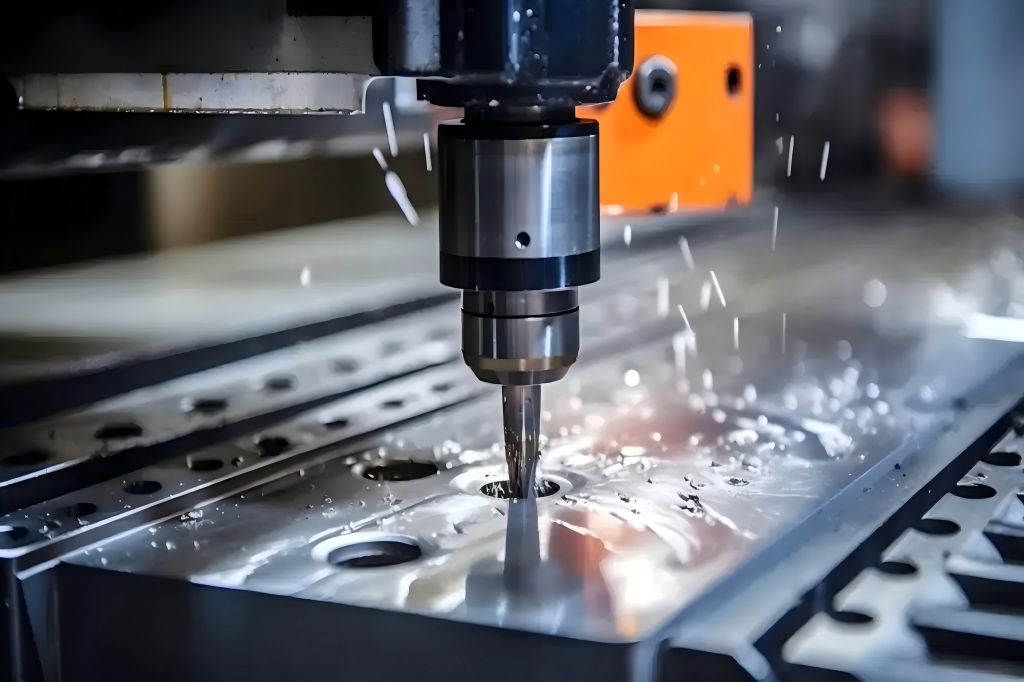CNC (Computer Numerical Control) machining has revolutionized the manufacturing landscape, introducing high precision and efficiency in tasks such as milling, turning, and, of course, drilling. Drilling is a widely used machining operation that can be done in a variety of ways to meet various industrial requirements.
From small, high-precision holes in aerospace components to large bores in heavy equipment, CNC drilling offers versatile solutions for a wide range of materials and applications.
What is CNC Drilling?
CNC drilling is the technique of creating cylindrical holes in a workpiece by means of a spinning cutting instrument, usually a drill bit. CNC machines are programmed via CAD/CAM software to control the movement of the drill bit, ensuring precise positioning and depth.
Unlike traditional drilling, CNC drilling is fully automated, enabling high precision, repeatability, and efficiency in large-scale production.
The choice of the appropriate drilling method depends on factors such as material type, hole diameter, hole depth, and the complexity of the part. Below, we explore different CNC drilling techniques, each of which is suited to specific manufacturing needs.
Overall Comparison Table of CNC Drilling Techniques
| Drilling Method | Precision | Speed | Hole Depth Capability | Material Suitability | Cost | Best For |
| EDM Drilling | Very High | Slow | Very Deep | Hard/Brittle Materials | High | Small, deep, precision holes |
| Gun Drilling | High | Moderate | Very Deep | Metals | Moderate | Deep, narrow holes in metals |
| Dowel Drilling | Moderate | Fast | Shallow | Wood, Metal | Low | Aligning and assembling parts |
| Gantry Drilling | High | Moderate | Deep | Large, Heavy Workpieces | Very High | Large workpieces, multi-axis drilling |
| Peck Drilling | High | Slow | Deep | Metals, Hard Materials | Moderate | Deep-hole drilling in metals |
| Pillar Drilling | Moderate | Moderate | Shallow | General Materials | Low | Small-medium workpieces, general purpose |
| Spade Drilling | Low | Fast | Moderate | Soft Materials | Low | Large holes in soft materials |
| Spot Drilling | High | Fast | Shallow | All Materials | Low | Pre-drilling for precision holes |
| Radial Drilling | Moderate | Moderate | Deep | Large Workpieces | High | Large workpieces with multi-location drilling |
| Step Drilling | Moderate | Fast | Shallow | Thin Materials | Low | Multiple hole sizes in thin materials |
EDM Drilling
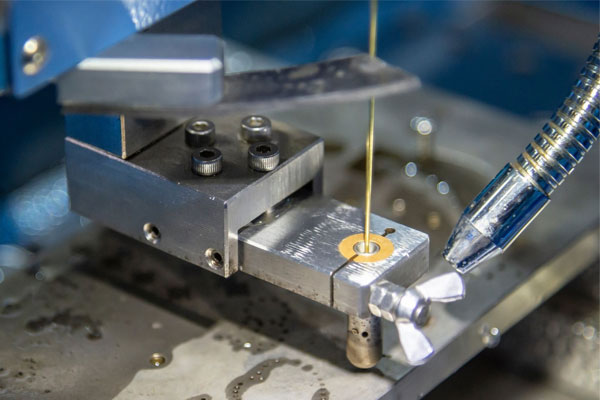
EDM drilling(Electrical Discharge Machining Drilling) uses electrical discharges (sparks) to erode material and create holes, making it ideal for drilling hard materials like tungsten, hardened steel, and titanium. EDM drilling is a non-contact process, which eliminates mechanical stresses and tool wear issues that are common in traditional drilling methods.
Advantages:
- Precision: EDM drilling can create highly precise holes, even in extremely hard or brittle materials.
- No mechanical contact: There is no chance of tool wear or mechanical deformation because there is no contact between the tool and the material.
- Deep and small holes: Capable of drilling very small, deep holes that would be challenging with traditional methods.
Disadvantages:
- Slower than mechanical drilling: The erosion process takes longer than conventional drilling.
- High initial cost: EDM drilling machines and the electrodes used can be expensive.
Applications:
- Turbine blades and other hardened components are designed with cooling holes by the aerospace and automobile sectors.
- Medical device manufacturing, especially for precision instruments requiring small, deep holes.
- Tool and die manufacturing, where high precision is critical.
Gun Drilling
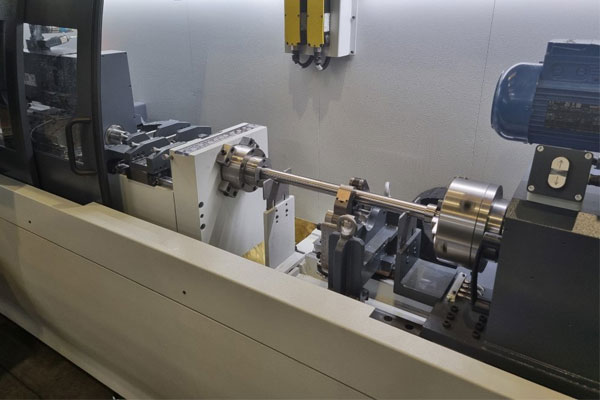
The goal of gun drilling, a deep-hole drilling method, is to precisely drill long, straight, and narrow holes. It uses a specialized drill bit and high-pressure coolant to evacuate chips and keep the bit cool during operation. Gun drilling is ideal for producing holes with depth-to-diameter ratios as high as 300:1.
Advantages:
- High accuracy: Can achieve excellent precision even in deep holes.
- Good surface finish: Reduces the need for secondary finishing operations.
- Efficient chip removal: High-pressure coolant ensures chips are effectively removed from the hole, reducing the risk of tool damage.
Disadvantages:
- Limited to small-diameter holes: Typically used for smaller holes (1 mm to 50 mm in diameter).
- Costly setup: Requires specialized equipment and tooling, which can increase initial costs.
Applications:
- Automotive and aerospace industries for drilling deep holes in engine blocks, crankshafts, and hydraulic systems.
- Medical devices, particularly in applications that require long, narrow holes.
- Precision mold and die manufacturing.
Dowel Drilling
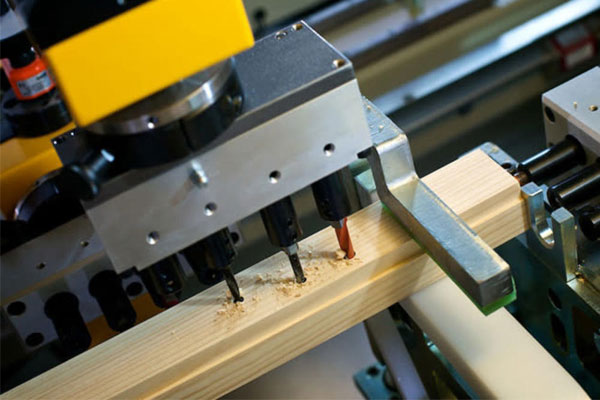
Dowel drilling involves drilling holes for dowels, which are cylindrical pins used to align or secure two or more parts. This technique is common in woodworking but is also used in metalworking to ensure precise alignment between components during assembly.
Advantages:
- Precise alignment: Dowel drilling allows for precise, repeatable alignment in assemblies, ensuring that parts fit together perfectly.
- Increased joint strength: Dowels strengthen joints, making them suitable for structural components.
- Versatile: May be applied to metal, plastic, and wood among other materials.
Disadvantages:
- Limited scope: Primarily used for alignment purposes, so its application is limited compared to other drilling methods.
- Requires precise setup: Accurate positioning is required to ensure proper alignment, which can increase setup time.
Applications:
- Furniture and cabinetry manufacturing for assembling parts with precision.
- Metalworking for aligning fixtures and mechanical assemblies.
- Construction, where dowels are used to join large wooden or metal parts.
Gantry Drilling
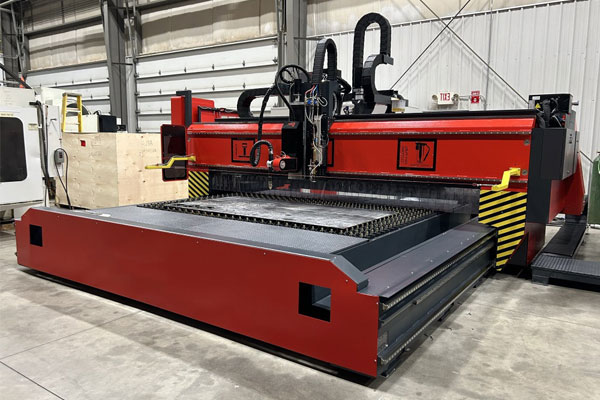
Gantry drilling uses a CNC gantry machine, which consists of a large frame that allows the drilling head to move across a large workpiece. This technique is suitable for drilling oversized components that require stability and precision over a large area.
Advantages:
- Large workpieces: Ideal for drilling large, heavy components that are difficult to reposition.
- Multi-axis capability: Gantry machines allow for drilling at multiple angles and positions on a single setup.
- High stability: Provides excellent stability and precision for heavy-duty applications.
Disadvantages:
- Expensive: Gantry drilling machines are large, complex, and expensive.
- Space requirements: Requires significant space, making it impractical for small workshops.
Applications:
- Aerospace industry for drilling large components like aircraft wings and fuselage sections.
- Shipbuilding for drilling metal sheets and large parts.
- Heavy equipment manufacturing, such as drilling holes in industrial machinery frames.
Peck Drilling
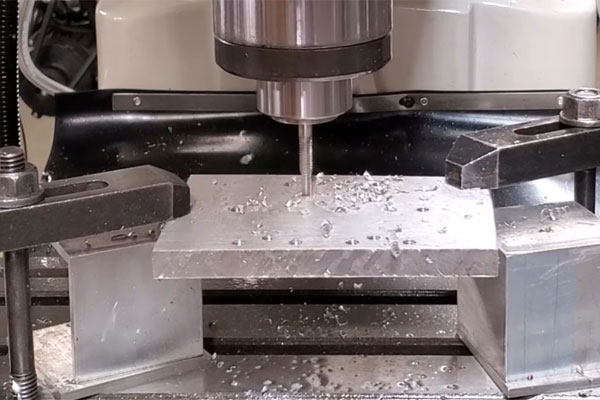
Peck drilling is a deep-hole drilling method in which the drill bit occasionally retracts to release chips and dissipate heat. This prevents tool breakage and ensures consistent performance when drilling deep holes in hard materials.
Advantages:
- Prevents overheating: By retracting periodically, peck drilling reduces heat buildup, which extends tool life.
- Better chip evacuation: Improves chip removal in deep holes, preventing damage to the tool or workpiece.
- Enhanced accuracy: Maintains straightness and precision in deep holes.
Disadvantages:
- Slower process: The periodic retraction increases the overall drilling time.
- Limited to deep holes: Not suitable for shallow holes, where the retraction is unnecessary.
Applications:
- Automotive and aerospace industries for drilling deep holes in engine blocks, gears, and other critical components.
- Deep and accurate holes are drilled in drilling equipment and pipelines by the oil and gas sector.
- Ideal for deep-hole drilling in metal fabrication where hole straightness is critical.
Pillar Drilling
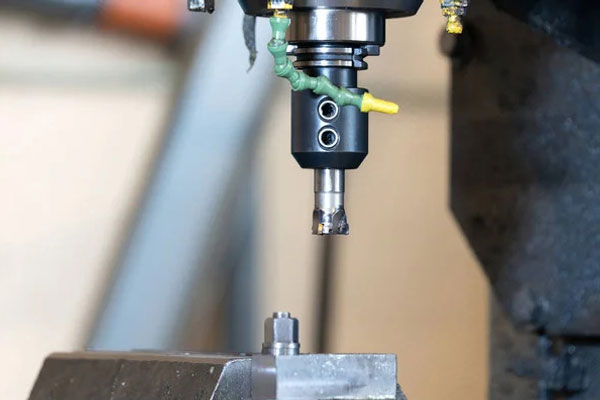
Pillar drilling, also known as column drilling, involves a vertical drill mounted on a sturdy column or pillar. The workpiece is placed on a fixed table, and the drill head moves vertically to create holes in the workpiece. This technique is frequently applied to small- to medium-sized workpieces for general-purpose drilling.
Advantages:
- Stable and accurate: The vertical column provides stability, ensuring accurate hole placement.
- Simple and versatile: ideal for many materials, including as metal, plastic, and wood.
- Cost-effective: Pillar drills are generally affordable and easy to use.
Disadvantages:
- Limited to vertical drilling: Pillar drilling is confined to vertical operations, limiting its versatility for angled holes.
- Manual operation: Frequently necessitates manual setup and execution, resulting in imprecise precision.
Applications:
- General metalworking and woodworking for drilling mounting holes and aligning parts.
- Small-scale manufacturing operations where precision is required but complexity is minimal.
- Educational settings for training students in basic drilling techniques.
Spade Drilling
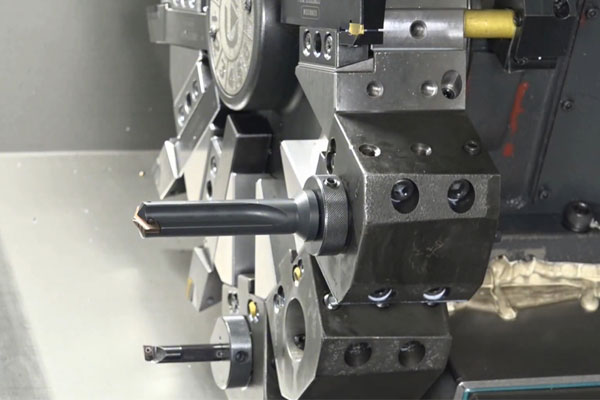
Spade drilling uses a flat, spade-shaped drill bit designed to quickly remove large amounts of material. It is commonly used for drilling large-diameter holes in softer materials like wood, plastic, and soft metals.
Advantages:
- Fast material removal: Spade drilling can create large holes quickly, making it efficient for large-volume tasks.
- Cost-effective: Spade drill bits are less expensive than other types of drill bits, especially for large holes.
- Easy setup: Requires little in the way of tools and is simple to set up and run.
Disadvantages:
- Limited precision: Spade drilling is not ideal for applications that require tight tolerances or precision.
- Not suitable for hard materials: Spade drill bits can wear out quickly or break when used on harder materials like steel or titanium.
Applications:
- Woodworking for creating large clearance holes for plumbing and electrical installations.
- Automotive industry for drilling large holes in plastic and soft metals.
- Construction for quickly drilling holes in timber or sheet metal.
Spot Drilling
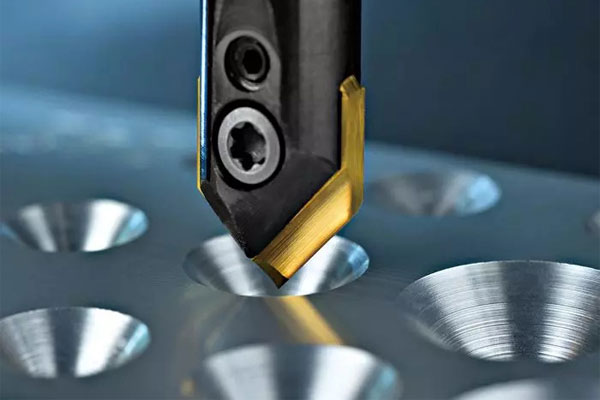
Spot drilling is a pre-drilling process where a small, shallow hole is created at the intended drilling location. This spot serves as a guide for the main drilling operation, ensuring that the larger drill bit doesn’t wander.
Advantages:
- Prevents drill wandering: Spot drilling ensures that the final hole is drilled in the correct position.
- Increases accuracy: Provides a precise starting point for follow-up drilling operations, especially on uneven or curved surfaces.
- Reduces tool wear: Helps prevent deflection and tool wear by accurately guiding the main drill bit.
Disadvantages:
- Extra step: Adds an additional step to the drilling process, increasing production time slightly.
- Not used for final holes: Spot drilling is only a preparatory step and cannot be used to create final holes.
Applications:
- Aerospace and automotive industries for drilling precision holes in curved or difficult-to-access areas.
- Electronics manufacturing for creating accurate guide holes for PCB components.
- Medical device manufacturing for precise hole placement in surgical instruments.
Radial Drilling
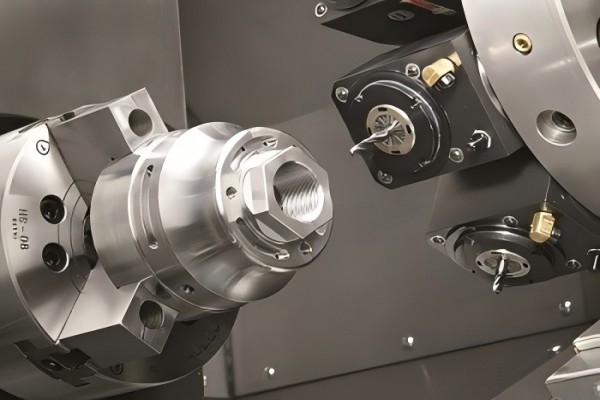
Radial drilling machines feature a rotating arm that allows the drill head to move around a large workpiece. This flexibility makes it ideal for drilling multiple holes in large or heavy components without having to reposition the workpiece.
Advantages:
- Flexible positioning: The radial arm allows for drilling in multiple locations without moving the workpiece.
- Ideal for large workpieces: Can handle large and heavy components, which would be difficult to move between operations.
- Multi-angle drilling: Capable of drilling at various angles, adding versatility to the operation.
Disadvantages:
- Bulky and expensive: Radial drilling machines are large and costly, making them impractical for smaller workshops.
- Requires significant space: Due to their size, radial drills require a large footprint in the workshop.
Applications:
- Shipbuilding, construction, and heavy equipment manufacturing, where large metal components need to be drilled in multiple locations.
- Industrial manufacturing for drilling structural components and large frames.
- Fabrication of large machinery parts where repositioning the workpiece is difficult.
Step Drilling
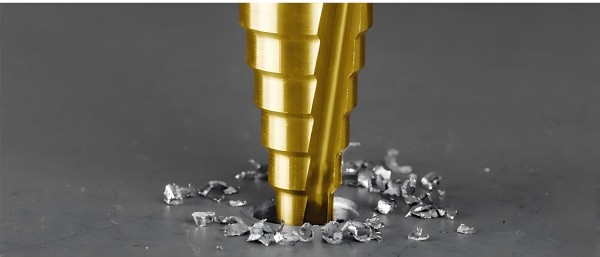
Step drilling uses a special drill bit with multiple diameters to drill holes of varying sizes in one operation. As the bit penetrates the material, it progressively drills larger holes, eliminating the need for multiple tools or passes.
Advantages:
- Efficient: Drills multiple hole sizes in one pass, reducing the need for tool changes and speeding up production.
- Cost-effective: Lowers tooling expenses by obviating the requirement for several drill bits.
- Smooth transitions: Creates clean, burr-free holes with smooth transitions between diameters.
Disadvantages:
- Limited depth: Step drilling is best suited for thin materials, as deeper holes can lead to poor quality or inaccuracies.
- Restricted applications: Primarily used for sheet metal and other thin materials, limiting its use in thicker workpieces.
Applications:
- HVAC and electrical industries for drilling conduit holes in sheet metal.
- Automotive and machinery industries for drilling clearance holes in soft metals and plastics.
- Ideal for creating multiple hole sizes in a single operation, especially in light fabrication tasks.

